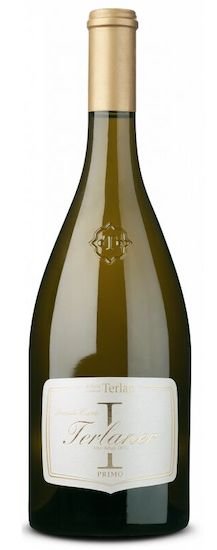Whether you use the Italian name Cantina Terlano, or the German name Kellerai Terlan, there’s no difference in the way the wine tastes. Founded in 1893, the cooperative is one of the oldest in Südtirol/Alto Adige that features 143 different growers working together with about 190 hectares of mountain vineyards. One taste of any wine from this portfolio is enough to take your breath away. But what makes Terlano one of the most prestigious producers in the region isn’t just the quality of its wines, it’s also the longevity of them. Some of Terlano’s top white cuvées can last decades in the cellar, the acidity and minerality helping to sustain and bolster the wines as the years go by. Nestled into volcanic rock, the mineral rich soils (full of quartz) produce some of the most expressive grapes in the region.
All the wines of Terlano are incredible, but here’s what always grabs peoples’ attention: they have a $250 bottle of white wine called the Primo Grande Cuvee that gets monster scores every year and can age gracefully for a decade or more. The average wine drinker rarely thinks to mature white wine in general, let alone alpine wine from the Alto Adige. But when a white cuvée from Südtirol costs the same as a Grand Cru Burgundy, it raises a few eyebrows.
The Burgundy comparison is apt, however. Not only are the soils near Terlano capable of producing white wines of astounding complexity, the wine’s age-worthy potential is again a direct parallel to the great Chardonnays of the Côte d’Or. Eric Guido from Vinous writes, the Primo Grande Cuvée “can compete with some of the top white wines around the world. How do they age, you might ask? These wines were vinified and refined for one year in large oak before being placed into a steel tank and allowed to mature on the lees for ten years or more. In fact, drinking their top wines young is a total disservice to what winemaker Rudi Kofler and his team have created at this bastion of tradition. If there was one stop to make while visiting the region that could give you a real sense of the Alto Adige experience, Terlano is it.”
Check out the scores for the Primo as well:
97 POINTS: ROBERT PARKER'S WINE ADVOCATE - This is the top-shelf wine from Cantina Terlano, to say the least. It's a careful blend of 65% Pinot Bianco, 32% Chardonnay and 3% Sauvignon Blanc. The 2018 Alto Adige Terlaner Grand Cuvée Primo shows ripeness, but the fruit is plush, rich and beautiful. It's an intricate portrait of these three grapes, with brushes of grapefruit and Indian jasmine, or Turkish soap you might buy at an Istanbul bazaar. There is a very citrusy side to the wine with that grapefruit note and the perfumed skin of the citron fruit they call "cedro" in Italian. All in all, this wine is super rich with generous fruit weight and concentration. Cantina Terlano does its best work in terms of texture, mouthfeel and richness, and this release of 3,330 bottles is their masterpiece.
95 POINTS: VINOUS - A compelling mix of dusty dried flowers, crushed stone, lemon oils and freshly sliced pear wafts up from the 2018 Terlaner Grande Cuvée Primo. Its textures are like pure silk, elegant and medium in weight, guided by saline-infused acids that give way to ripe orchard fruits and the slightest hint of vanilla bean. This lingers incredibly long, while tapering off perfectly balanced and perfumed with nuanced tannins and hints of tropical citrus. The Cuvée Primo is a blend of 70% Pinot Bianco, 28% Chardonnay and 2% Sauvignon Blanc. Thereʼs a balanced opulence here thatʼs not always present at this young age, which makes the 2018 impossible to ignore.
-David Driscoll













